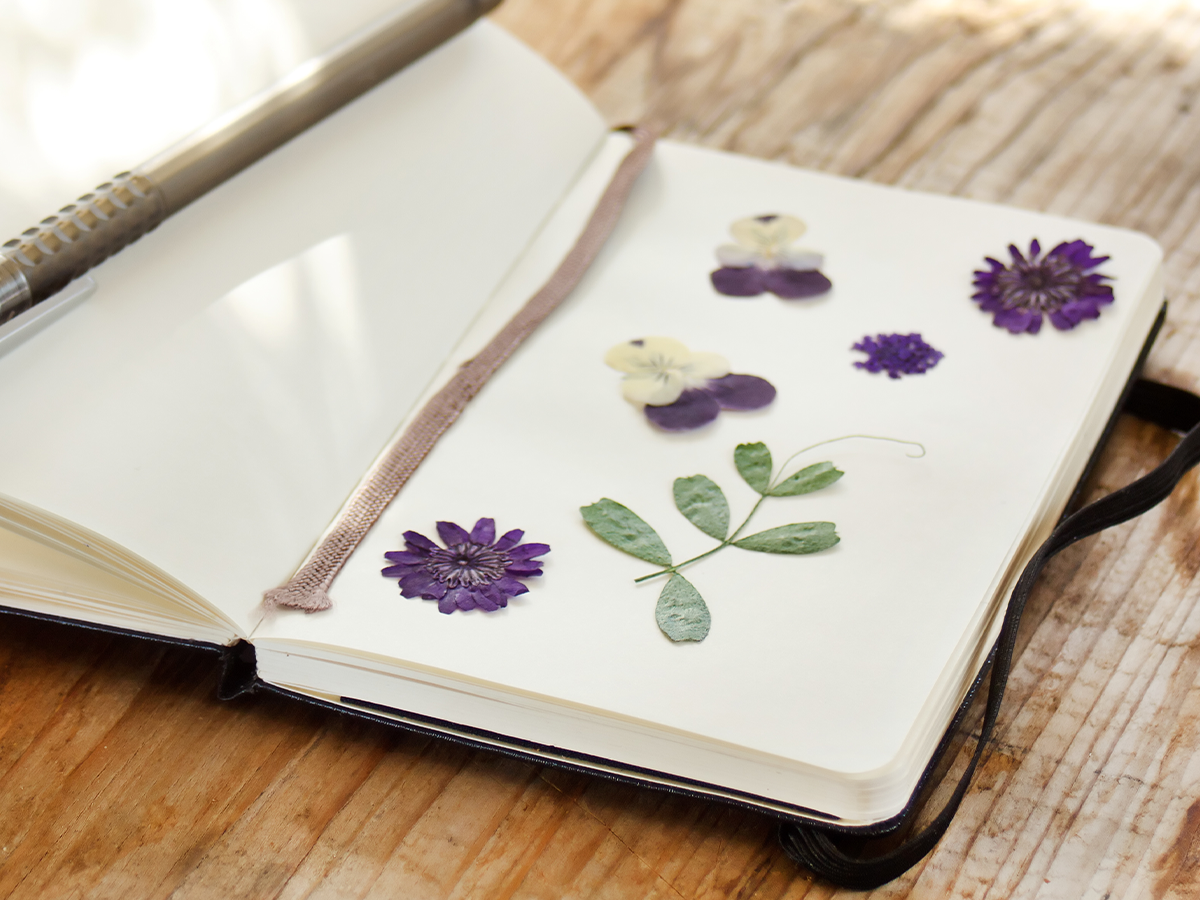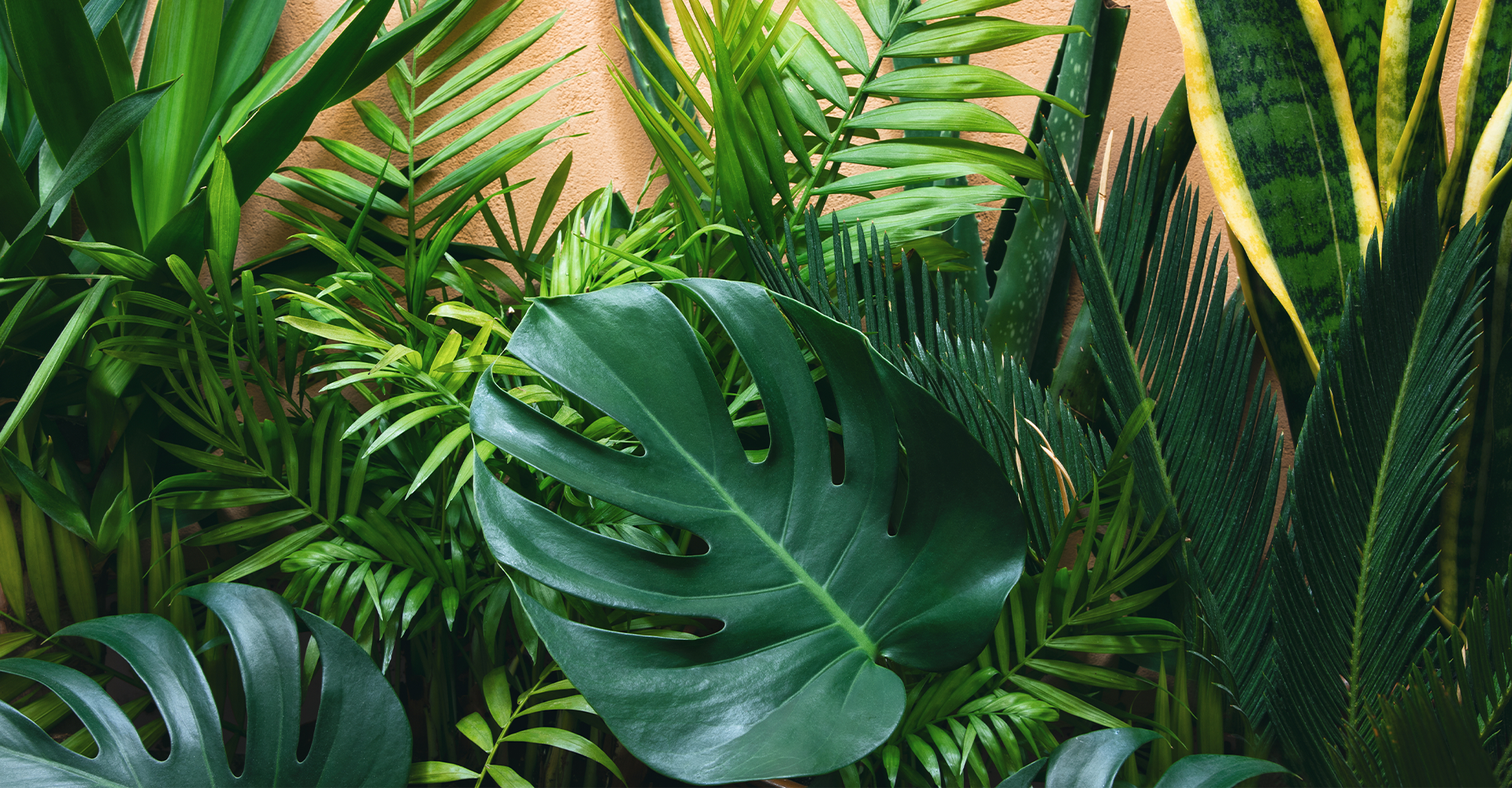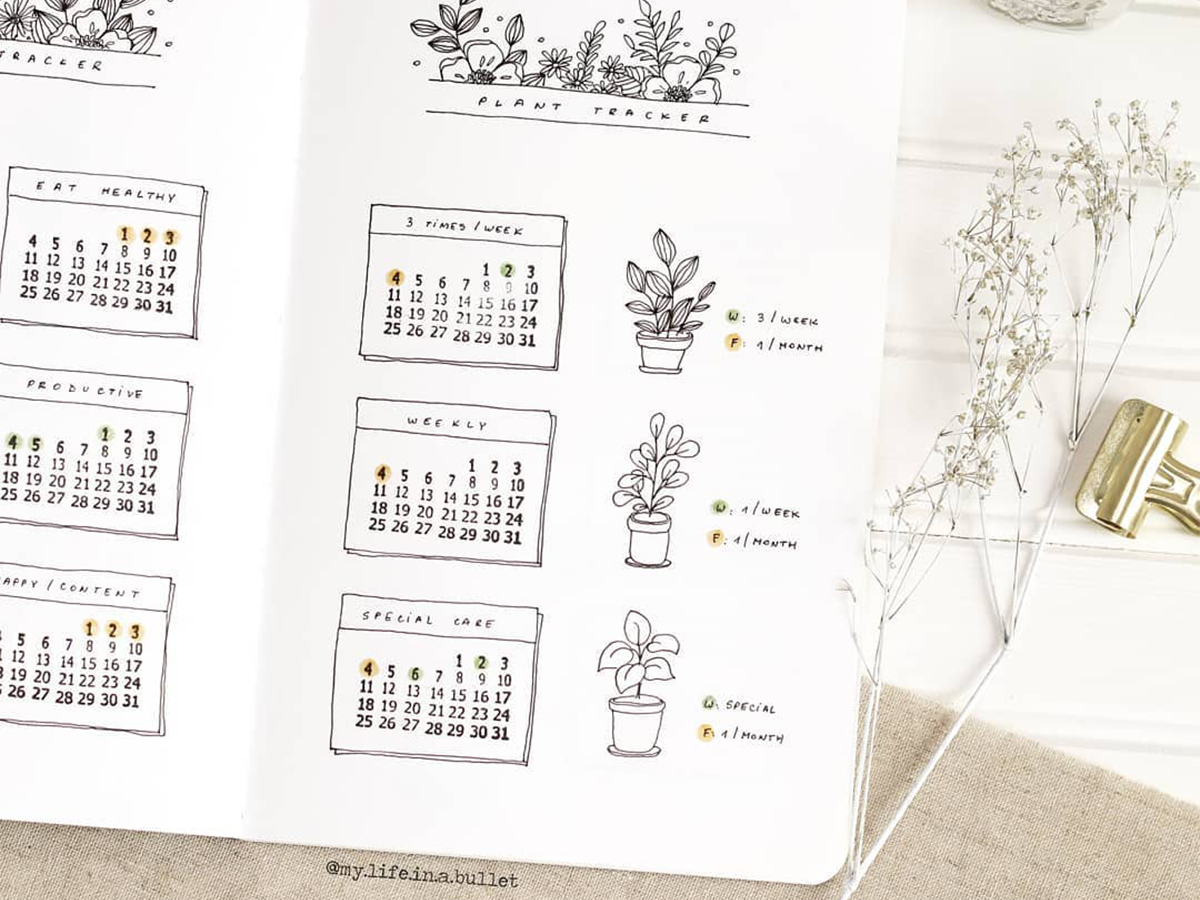We’ve all seen her on Instagram or secretly envied her at dinner parties; the elusive Impossibly Perfect Plant Lady. She’s the one whose home feels like a portal into the Secret Garden. Her living room looks like a home decor magazine cover, complete with a thriving fiddle-leaf fig. Her chic floating shelves are covered in trailing vines as graceful as a ballerina’s arms.
Meanwhile, your plants look like you picked them up from a shelter for neglected plants. (Don’t even try to tell people “It’s a rescue.” We tried it already; you’ll get no sympathy.)
If you’re feeling personally attacked, let’s clear the air—we’ve been there. We know the struggle. However, we also know it’s possible to become the Impossibly Perfect Plant Lady in the new year. Her secret is that she keeps a plant journal—and it’s yours to steal.
WHAT IS A PLANT JOURNAL?
A plant journal, or a garden journal, is essentially a log for keeping track of your plant care routine. You can also use it to make notes about new and exciting growth, and even keep a few photos. It’s a little bit like a Baby Book for your plants, minus the guilt from your mother-in-law for not making note of every single milestone.
You can certainly buy a pre-made plant journal, but being the crafty ladies we are, we prefer to create our own. That way, we can add only the fields we care about, and we can make sure the journal itself is cute as heck. (Let’s be honest—if it’s not cute, we probably won’t use it.)

CUTE PLANT JOURNAL IDEAS
If you have the tools and wherewithal to digitally create a page template and get your journal custom-printed and bound, all the power to you! However, we think a blank journal and some fun colored pens will help you achieve that genuine home-grown effect in the pages of your journal. We’ll get into how to structure your journal in a moment, but for now, let’s focus on making the cover irresistible.
Collage – If you already read a fair amount of home and garden mags, you can repurpose them by creating a plant collage all over the cover of your journal. Cut out the plants that make you the happiest and use your clippings and a glue stick to draft your layout. Once you’re happy with the look, brush on a coat of mod podge to seal everything down and add some shine.
Use Dried Flowers – If you’ve kept some of the blooms from last year’s garden, you can bring its life cycle full-circle by using them to decorate your plant journal. You can also buy dried flowers online or from a craft store and use mod podge to adhere them to your journal cover. So pretty!
Add Paint – A little paint instantly turns your journal into a one-of-a-kind keepsake. Go the sweet & simple route by color-blocking with painters tape and a few pretty shades, or unleash your inner artiste and paint a full-blown masterpiece.

LAYING OUT YOUR PLANT JOURNAL
Your plant journal should be equal parts form and function. Since you’ll be using your journal to keep yourself accountable to your plant care chores, it shouldn’t feel like a chore in itself to use the dang thing. You can customize your page layout however you like, but we feel that this layout helps you stay organized without a lot of fuss. With this layout, one two-page spread should represent a full month of plant care for one plant.
Section 1: Plant Name, Month, and Location
On the left-hand pages, create two blank “fields” at the top of the page with two lines. Fill in the first field with the plant name, and the second field with the month and year. If you have a lot of plants, you may also want to create a third field for the location in your house. For example; Begonia, January 2020, South Window in Living Room.
Section 2: Watering Calendar
Beneath the first section on the left-hand page, draw up a watering calendar. It can be as basic as jotting down “M, T, W, Th, F, Sa, Su” at the top and then writing out the dates below by week. Through the month, you can simply circle, cross out, or add a checkmark on days when you water your plant. Not only does this help you stay up on your watering schedule, but it’ll also help you learn how your watering needs change throughout the year in your area.
Section 3: Fertilizer Tracking
On the right-hand pages, write “Fertilizer” at the top and draw some checkboxes. You can simply check the boxes, or write down the expected application dates next to them to stay extra-organized. (Keep in mind that, just like our watering frequency, our plants’ fertilizer needs will vary a lot from season to season here in New York.)
Section 4: Everything Else
Below the Fertilizer section, add the label “Notes” and leave space for anything else you want to add. Use this space to make note of pruning you’ve done, growth you’ve noticed, or your battle tactics against pests and disease.
Plant tracker by my.life.in.a.bullet
MAKING YOUR PLANT JOURNAL WORK FOR YOU
The easier it is to use your journal, the more likely you are to stick with it. You might find it helpful to add colored tabs to the pages with the plant name, date, and location (if necessary) to quickly find what you’re looking for as the months and years pass. The easiest way to do this is to add a new tab every time you start a new month with your plants—make it a fun little ritual to remind yourself how Impossibly Perfect you’ve become!
Now that you’ve got the tools to become the “it” plant lady of the new year, you may be looking to restock your collection with plants that will help you look the part. If you’re in the Finger Lakes region, upgrade your plant situation by joining our upcoming Kokedama workshop, or our highly-anticipated Live Succulent Terrarium workshop in February! Register today to join us for an evening of plants, wine, and laughter—an Impossibly Perfect start to the new decade.


